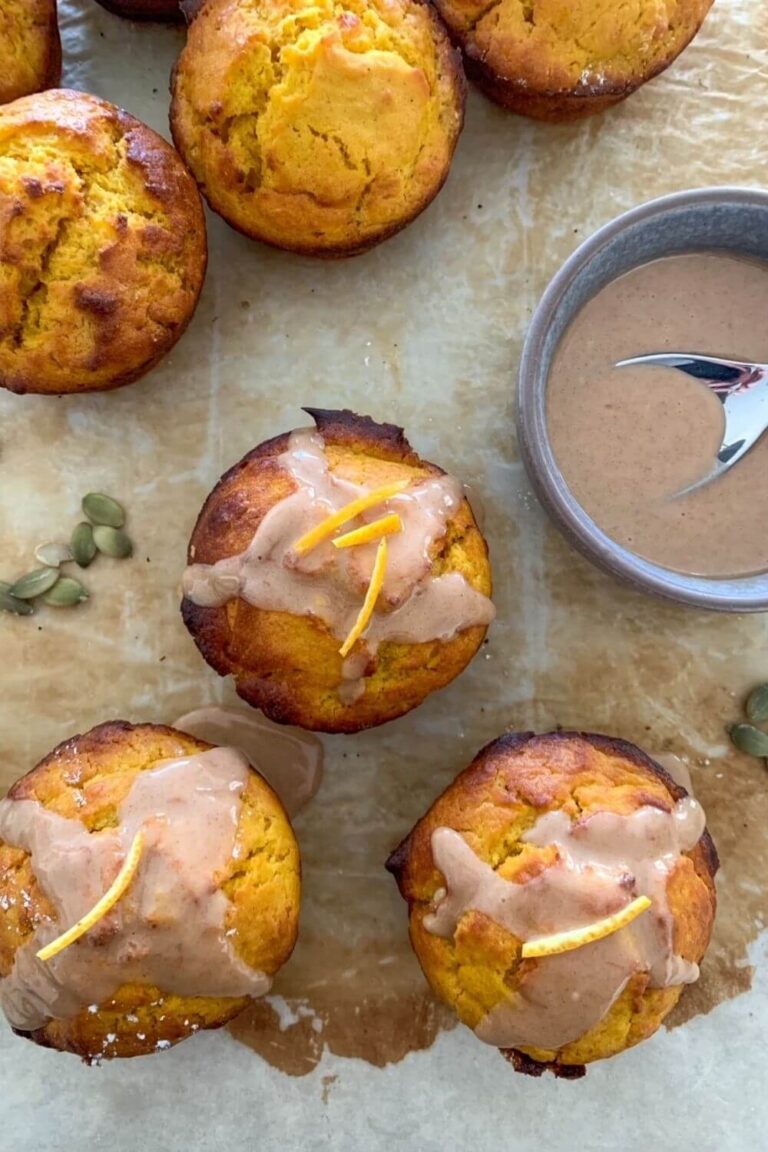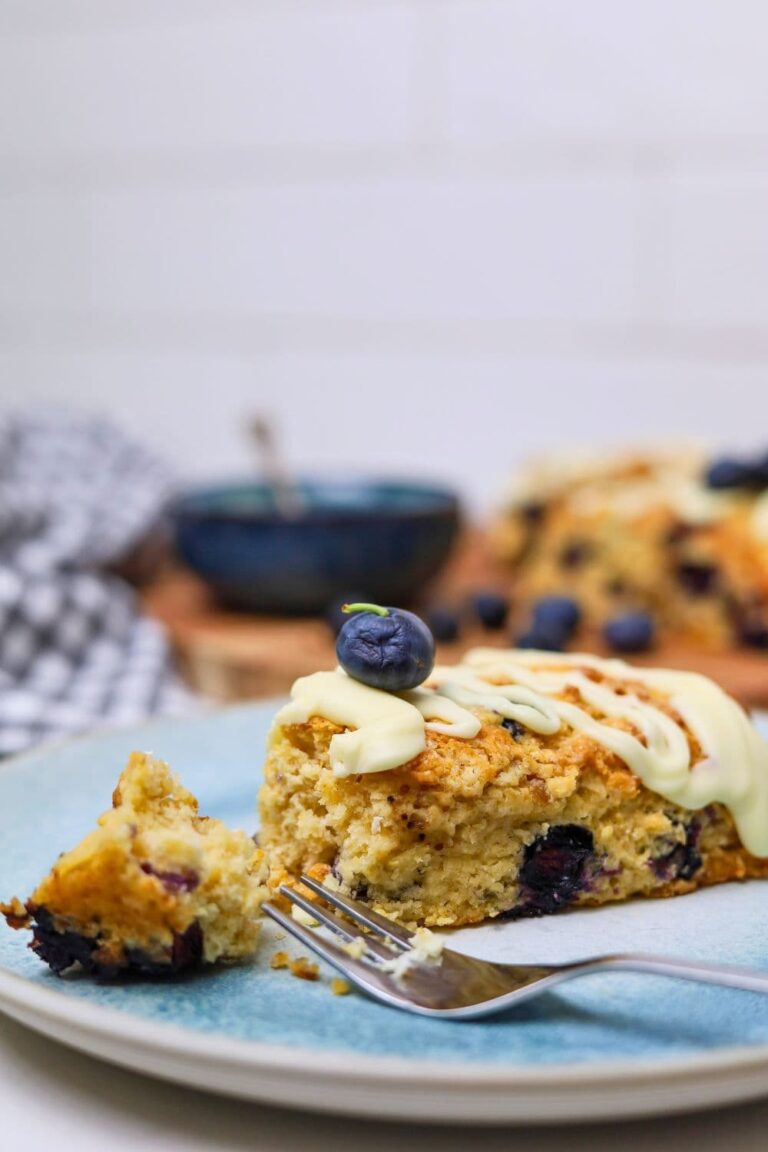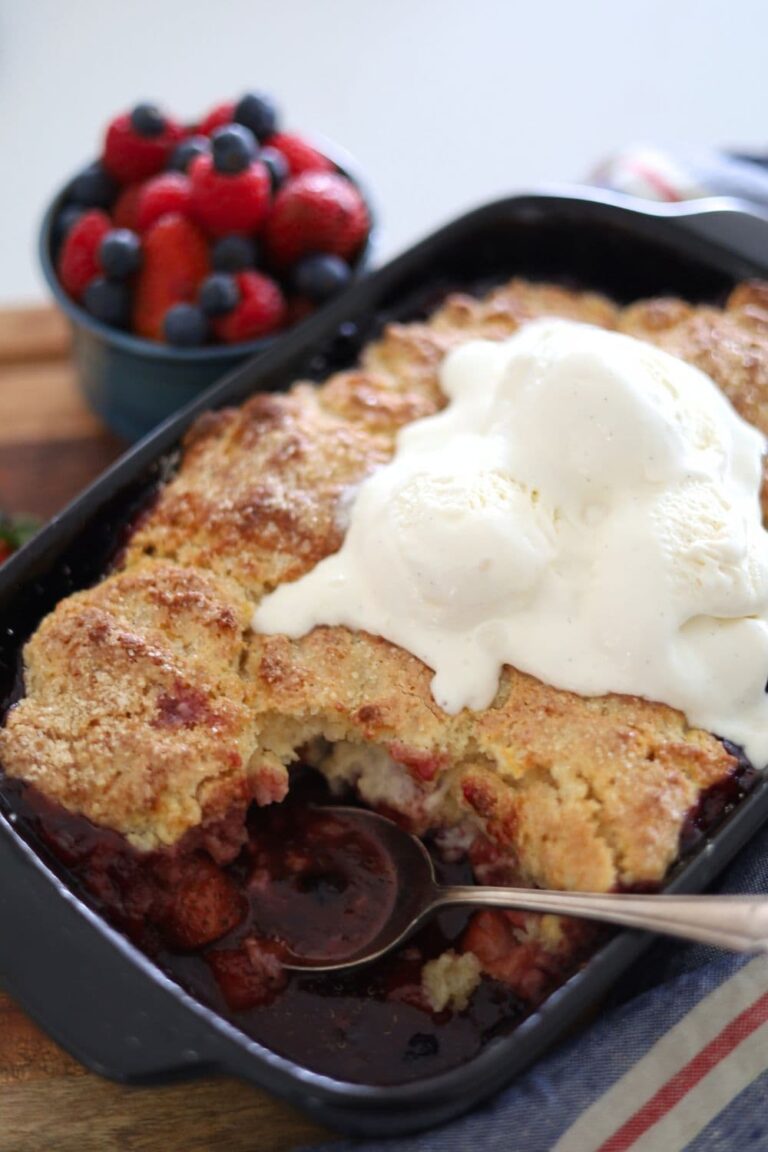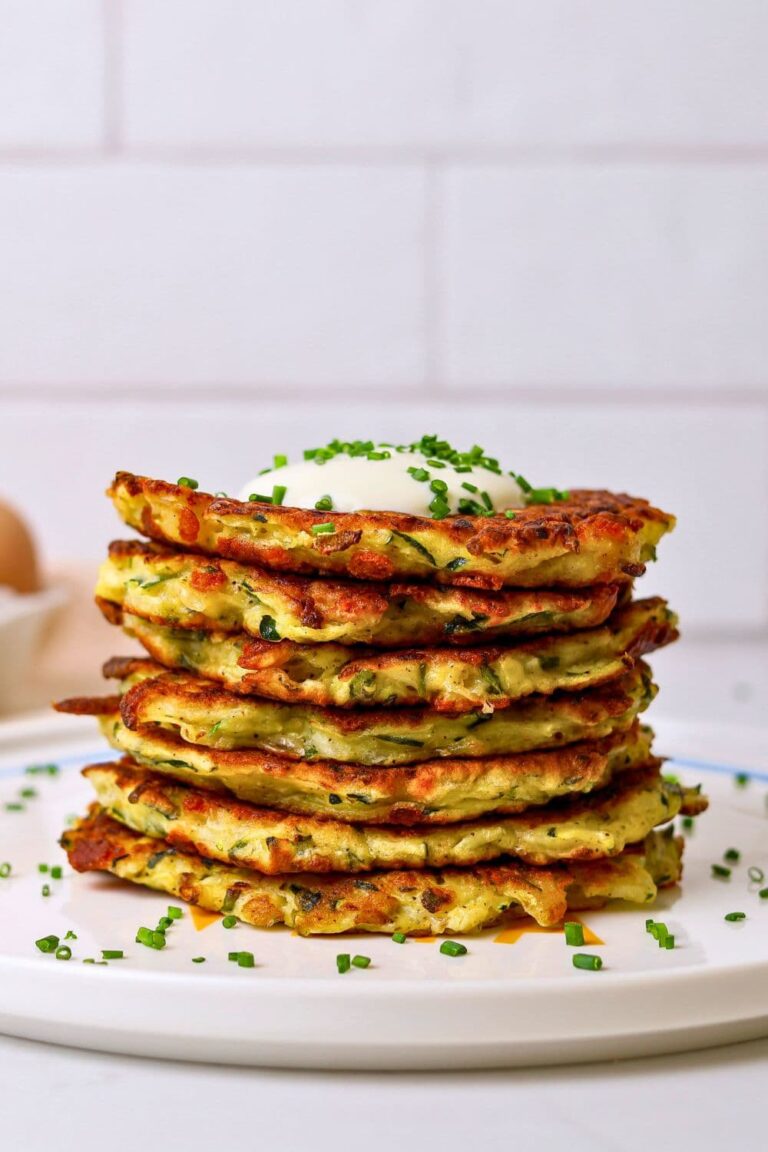Making a Sourdough Starter
This post may contain affiliate links.
Here you'll find easy step by step instructions on how to make a sourdough starter from scratch. You'll find notes on what to do each day, as well as the type of flour to use and a handy troubleshooting guide - all essential in making a sourdough starter.
In order to bake sourdough bread successfully, you need to create your own sourdough starter, a bubbly best friend if you will.
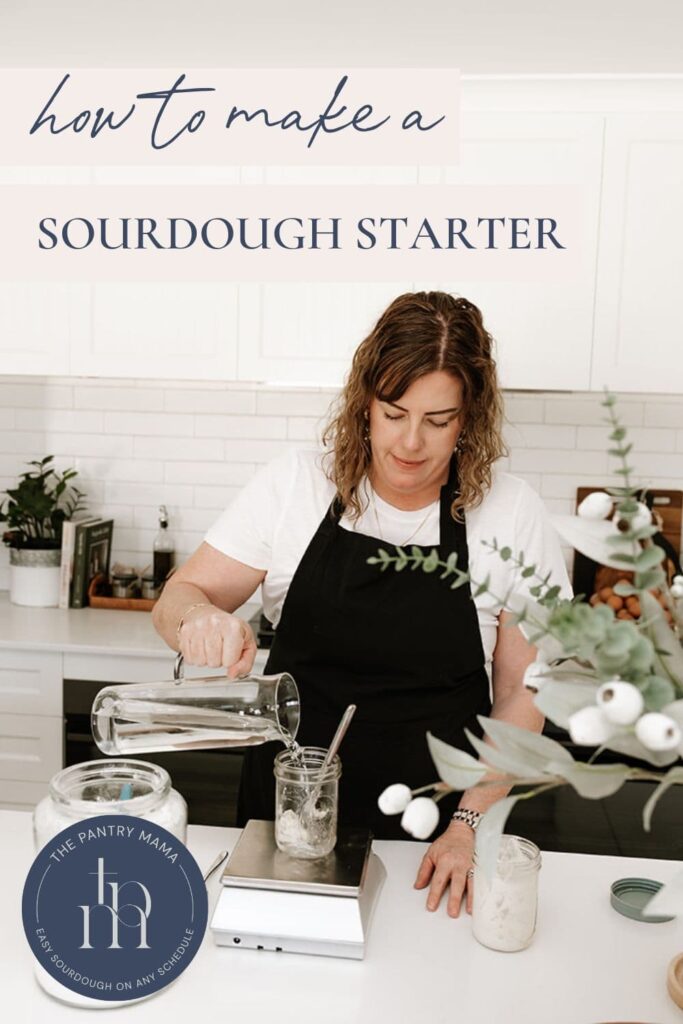
A sourdough starter is basically a collection of wild yeast and bacteria. The most amazing part is that every single sourdough starter will be unique in its own way because it is dependent on many environmental factors unique to your home. You can read more about how a sourdough starter works here.
I've set out how to make a sourdough starter in 7 easy daily steps. You can read through them at the end of this blog in step by step format.
Can I Bake With My Starter After 7 Days?
Now just a note - while 7 days is really all it takes to create a viable sourdough starter, your starter will need additional time until it's ready to bake with.
It is really dependent on your own home environment, temperature etc. Don't be disheartened! You can still bake with it, but you will find that your loaves improve over time as your starter matures.
Most people find their starter is "active" after about 14 days - but some can take a few months.
While you're waiting for your sourdough starter to mature and become active there are many discard recipes you can try like sourdough pancakes or this sourdough discard loaf baked in under 2 hours. Just remember your starter must be at least 7 days old before you can use the discard.
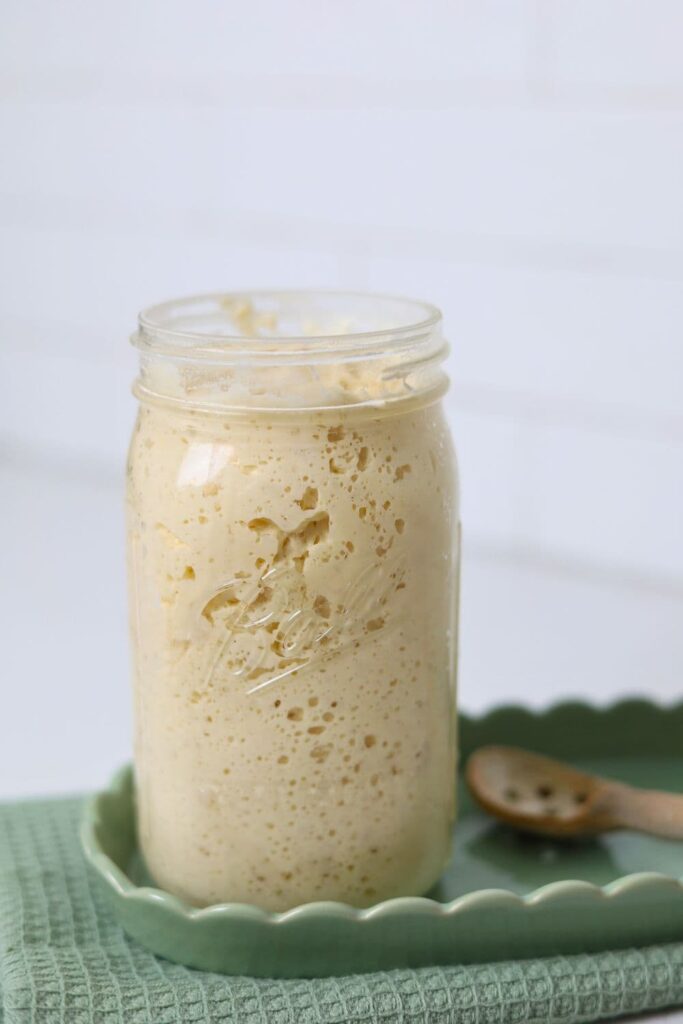
What Flour Should I Use?
You can really use any type of plain, non raising flour made from a grain that you like for this sourdough starter recipe. Do not use self raising flour or bleached flour of any kind.
I have successfully created sourdough starters with plain flour (all purpose flour), bread flour and wholemeal spelt flour. I've also milled my own whole wheat berries and started a super active starter from this.
Your starter will gather yeast not only from the environment, but also from the bacteria on the flour. Whole flours will have more of the "good stuff" on them, so will generally take off sooner. You can read more about where the yeast in sourdough starter comes from here.
A little rye flour added to your plain or bread flour will often help to get your starter bubbling sooner. It's like superfood for your sourdough starter!
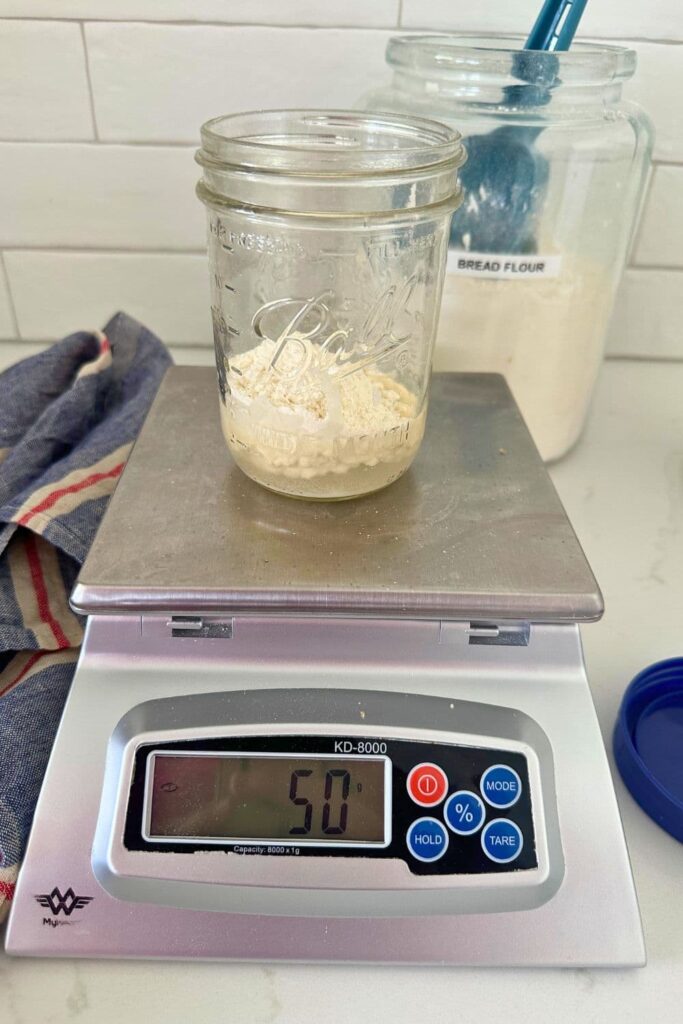
Troubleshooting Your Sourdough Starter
While you are growing or developing your sourdough starter, you may have some issues or questions that arise.
Here are the most common questions that I get asked about sourdough starters (you can also find an even more comprehensive list of questions about sourdough starters here).
- Liquid forming in or on top of your starter - sometimes you may get some dark liquid forming on top of or in the middle of your starter. It's called hooch and is perfectly normal. Just pour it off if you can - or mix it back in - and feed as per normal. You'll find that your starter develops hooch when it is hungry. I've written a guide to preventing hooch in your sourdough starter here.
- My starter smells like nail polish remover - again it's perfectly normal, it's just hungry, so feed, feed, feed.
- My starter isn't bubbling like the first few days - sometimes starters start out strong and then taper off a little between days 3-7. It's ok and may just be that the good bacteria is taking a little longer to win. Just keep feeding it consistently and you should see some action. Even if it's not really doing anything, the yeast will still need to be fed.
- How do I keep my starter warm - it's not totally essential to keep it warm, it will still work - it will just take a lot longer in a colder environment. Some ideas to keep your starter warm are inside the oven with the light on, next to the kettle, inside an Eziyo yoghurt maker or in a cupboard next to your oven. You'll find a full guide to keeping your sourdough starter warm here.
- Fruit Flies in my starter - your sourdough starter may attract fruit flies. They might have already been in your kitchen or they've heard there's new food! You'll find a full guide to dealing with fruit flies in sourdough here.
- Why is my sourdough starter forming a skin? - sometimes you'll find that your sourdough starter develops a crust or skin. It's totally ok and just means that it's getting a bit too dry on top. Try covering your sourdough starter with a jar lid that's not screwed on. Just scrape the skin off and feed as per normal.
- My starter has grown mold - if your starter develops anything pink or orange or furry, it's definitely time to ditch it and start again. Make sure that your jar is clean. If the mold happens a few times, consider using a different flour as sometimes the mold spores come from the flour and not the environment.
- Can I feed my starter with different flour? - If you run out of the type of flour you started with, it's ok to feed it with a different flour. If you just feed it once and then go back to the type you started with you shouldn't have any issues. If you are swapping the type of flour for all subsequent feeds then your starter may go through an adjustment stage as the levels of bacteria and yeast get used to their new food.
- Can I cook with my discard straight way - no, you need to wait at least 7 days before you use your sourdough discard. It's not recommended to keep your sourdough discard before this time. When you're ready to start using your discard, you'll find lots of uses and recipes for sourdough discard here.
- What water to feed my sourdough starter with? - water quality is extremely important to a sourdough starter. You should avoid many types of water including distilled and reverse osmosis. You can find a full guide to the water you should use for your starter here.

How Do I Know When My Starter Is Ready to Bake With?
Sourdough starters can start to be ready to bake with from around 7 days, however it's very unusual for a starter to be active enough at that stage.
I would generally say 14 days MINIMUM before you try and bake with yours.
That doesn’t mean you can’t try to bake with it before that, however, the longer it matures, the stronger and more active it will be. It will also become more resilient, meaning it’s much harder to kill and will be around a long time.
You will be able to tell if it's ready to bake by observing some of it's characteristics (such as doubling consistently). An easy way to check is to place a rubber band on your jar at the level where you fed your sourdough starter.
I don't recommend relying on the float test to check whether your starter is ready. I created this guide to understand when your sourdough starter is ready to bake with.
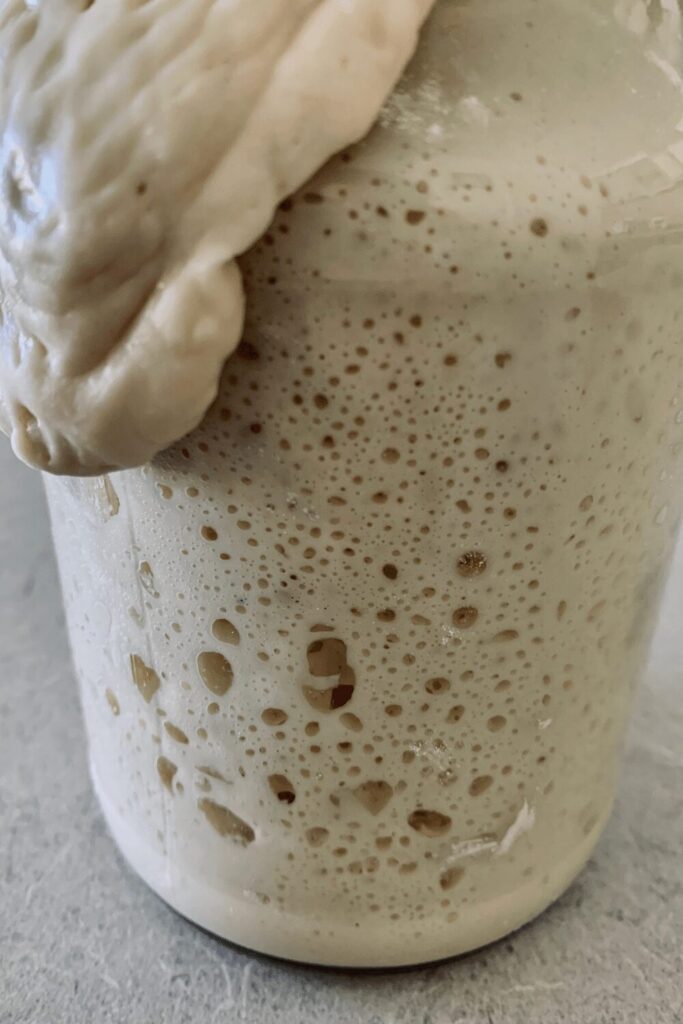
What To Do If Your Sourdough Starter Isn't Ready to Bake With:
- Continue to feed your starter with fresh flour and water twice a day for a few days until its consistently rising and falling. Remember that every starter will be different. It could take 14 days, it could take 28 days.
- If you need a break pop it in the fridge for a few days. When you’re ready, take it out and start feeding it twice a day again for a few days. I generally don't recommend keeping an immature starter in the fridge, however if you need a break or you're going away, this is an option.
- Try feeding your starter a different type of flour for a few feeds. Unbleached is best. Rye flour is always a good one - it's like superfood to your sourdough starter.
- If you live in a cooler climate you might only need to feed once a day. Check to see when your starter is actually hungry (it will fall and be smelly).
Can I Use Gluten Free Flour?
Yes, gluten free flour will work to create a sourdough starter. You may have to play with the ratios, but you most certainly can create and bake successful sourdough with gluten free flour.
Hydration of Your Sourdough Starter
The instructions for this sourdough starter use equal amounts of flour and water to achieve a 100% hydration level for your starter. Majority of recipes (and all of my recipes) use a 100% starter.
As long as you always feed your starter equal amounts of flour and water, it will be at 100%. Even if you only have 20g of starter, and you feed it 50g of water and 50g of flour, you'll still have a 100% hydration starter.
When you are feeding your starter, you just need to make sure you always feed it more than it weighs itself. For example if you have 50g of starter in your jar, you'd want to feed it at least 50g of water and 50g of flour (a total of 100g) to make sure it has enough food.
Generally, the rule is 1:1:1 so 1 part starter, 1 part flour, 1 part water. But as long as you feed the starter more than it weighs, it will thrive. You can learn more about sourdough starter ratios here.
A lot of the time when a sourdough starter isn't doubling consistently, it's because it's not being fed enough, so always remember the 1:1:1 ratio.
A pasta madre is a good option if you want to build a lower hydration sourdough starter.
Changing Jars
If you’d like to put your starter into a clean jar then the easiest way to do it is when you feed it. Take out half of your starter, place in a clean jar and feed the starter in the clean jar as normal. Creating less mess with your sourdough starter is always a good thing.
You can either use the discard in the old jar or just wash out and have a clean jar ready for next time. It’s a good idea to transfer to a clean jar when the rim of your old jar gets really built up but you don't have to clean your sourdough starter jar as much as you think. If you’re feeding everyday, change your jar at least once a week.
You'll find my guide to the best jar for sourdough starter here and the best way to cover your sourdough starter here.
Storage
Once your sourdough starter is viable, it's a great idea to dry some of it out to ensure you never have to start again. Dehydrated sourdough starter is your insurance policy to never having to start again.
You can also find instructions for how and when to move your sourdough starter to the fridge and how to reactivate a dried sourdough starter, as well as how to maintain your sourdough starter once it's mature.
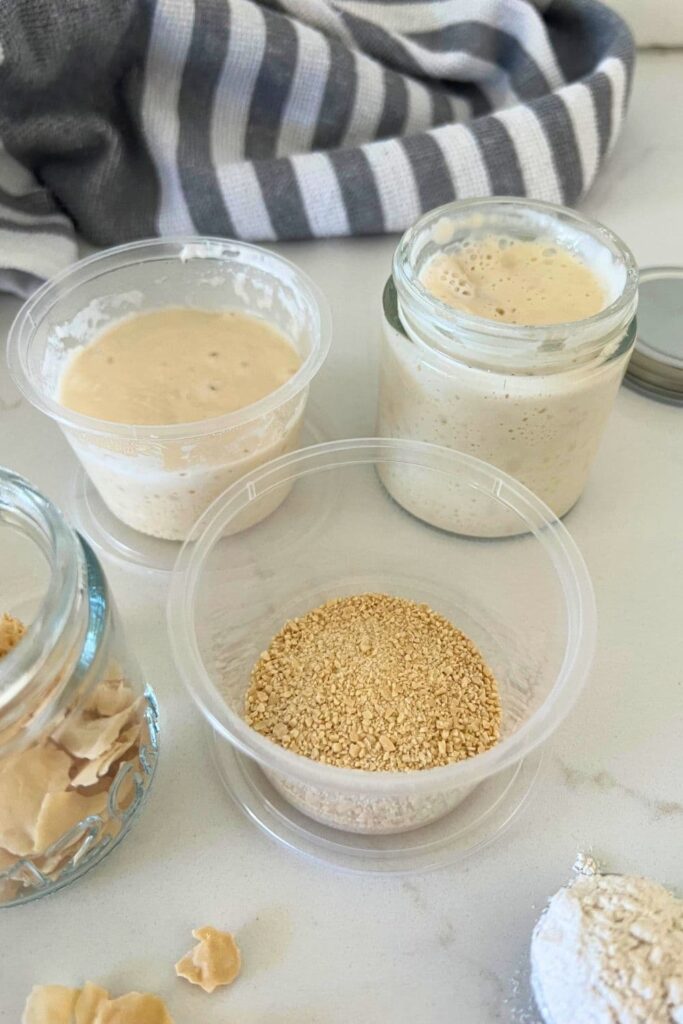
A Note on Measurements
I have provided the measurements for this starter in grams because it is easier to ensure accuracy (although sourdough starters are very forgiving and can tolerate eyeball measurements - as long as you're feeding your starter more than it weighs).
Many people come to my Facebook Group asking for help with their sourdough starter - and often the problem is that they are measuring using volume rather than weight. Once they start weighing their ingredients accurately, their starters develop quickly and rarely have issues.
The benefits of weighing your sourdough ingredients vs using volume measurements cannot be ignored.
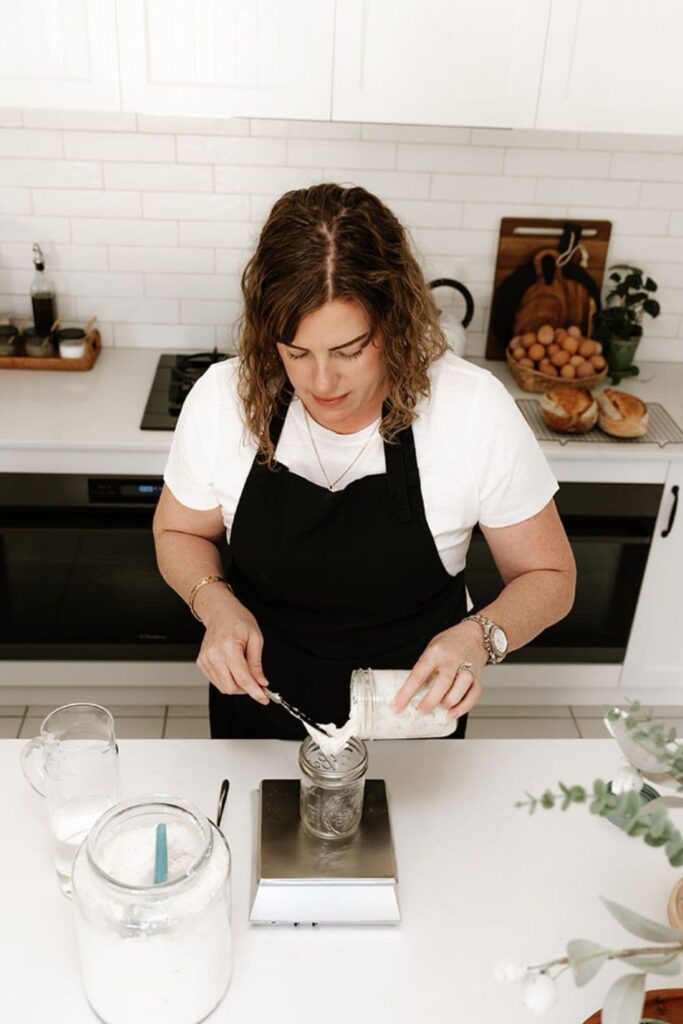
So let's get started and create you a super active sourdough starter so you can start baking sourdough recipes as soon as possible!
More Information About Sourdough Starters
You might find the following topics and articles interesting as you embark on your journey to building a thriving sourdough starter:
- Learn about 10 different types of sourdough starters and how to use them.
- Want to name your sourdough starter? You'll find over 160 name suggestions here.
- You can also read about the interesting history of sourdough bread here.
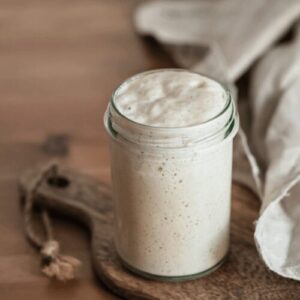
Sourdough Starter Recipe
Equipment
- Clean Jar
- Digital Scales
- Silicone Spatula
Ingredients
- 50 g Flour Bread, All Purpose, Rye, Whole Wheat - whatever you'd prefer
- 50 g Water Filtered
Instructions
- DAY 1:All you need for today is 50g of water and 50g of flour plus a clean jar. Mix the water & flour together in the jar, pop the lid on loosely (or a piece of paper towel & elastic band). Place the starter somewhere warm for the next 24 hrs. If your house is cold, pop it near the kettle or oven to keep it warm.
- DAY 2:Once your starter is 24 hours old, you need to check on it and give it a good stir. You do not need to add anything today - just get some oxygen into your mixture and then recover and pop aside for another 24 hours.Your starter may already have some bubbles forming - this is a great sign. But it's also totally fine if it's not doing anything. Time is everything! Make sure it’s in a warm spot - you can find some ideas here.
- DAY 3:On day 3 remove half of your starter and then add 50g of flour and 50g of water to the remaining 50g of starter in your jar. Mix it together with the end of a wooden spoon, being sure to get lots of oxygen into your mixture. Replace the cover and pop it away until tomorrow.See notes below for more info on using a clean jar vs same jar.Don’t worry if you keep checking it - it’s completely normal It’s good to notice how it changes in shape, size and smell over the 24 hours.At this stage it's completely normal for it to smell really bad and to have developed a layer of liquid on top (this is called hooch). It might look like the water has separated from the flour but it's just telling you that it's hungry. Stir the hooch in when you feed your starter. It's also quite normal for it to double in size. Keep going - it will be fine
- DAY 4:Step 4 is to feed your starter in the same way as you did yesterday. Remove 100g of your starter and then add 50g of flour and 50g of water to the remaining 50g of starter in your jar. Mix it all together with the end of a wooden spoon. Replace the cover. You’ll need to do this twice today, around 12 hours apart. While your starter will be fairly forgiving, set a reminder on your phone if you think you’ll forget it’s just like having a pet.
- DAY 5:Step 5 is to feed your starter in the same way as you did yesterday. Remove 100g of your starter and then add 50g of flour and 50g of water to the remaining 50g of starter in your jar. Mix it all together with the end of a wooden spoon. Replace the cover. You’ll need to do this twice today, around 12 hours apart. It's a good idea at this stage to pop an elastic band around the jar you are using. Put the elastic band at the level of your starter when you feed it. This helps you to be able to see how far your starter is rising when it peaks.
- DAY 6:Step 6 is to feed your starter in the same way as you did yesterday. Remove 100g of your starter and then add 50g of flour and 50g of water to the remaining 50g of starter in your jar. Mix it all together with the end of a wooden spoon. Replace the cover. You’ll need to do this twice today, around 12 hours apart.
- DAY 7:YAY! Your sourdough starter is a whole week old. Keep feeding twice a day as you have been for at least 14 days.Now I know you want to get to baking bread … but just remember that the most important thing about this whole process is time. Your starter might be ready, but chances are it will need a bit longer to mature - generally 14 days. You need to keep feeding your starter the same way as you have been, twice a day (discarding before you feed) until it's consistently doubling within around 2-6 hours after you've fed it. Once it's consistently doubling after every feed you can try and bake with it. Your starter will keep maturing as you use it.For more information on how to know when your starter is ready, go here.
Notes
Nutrition


